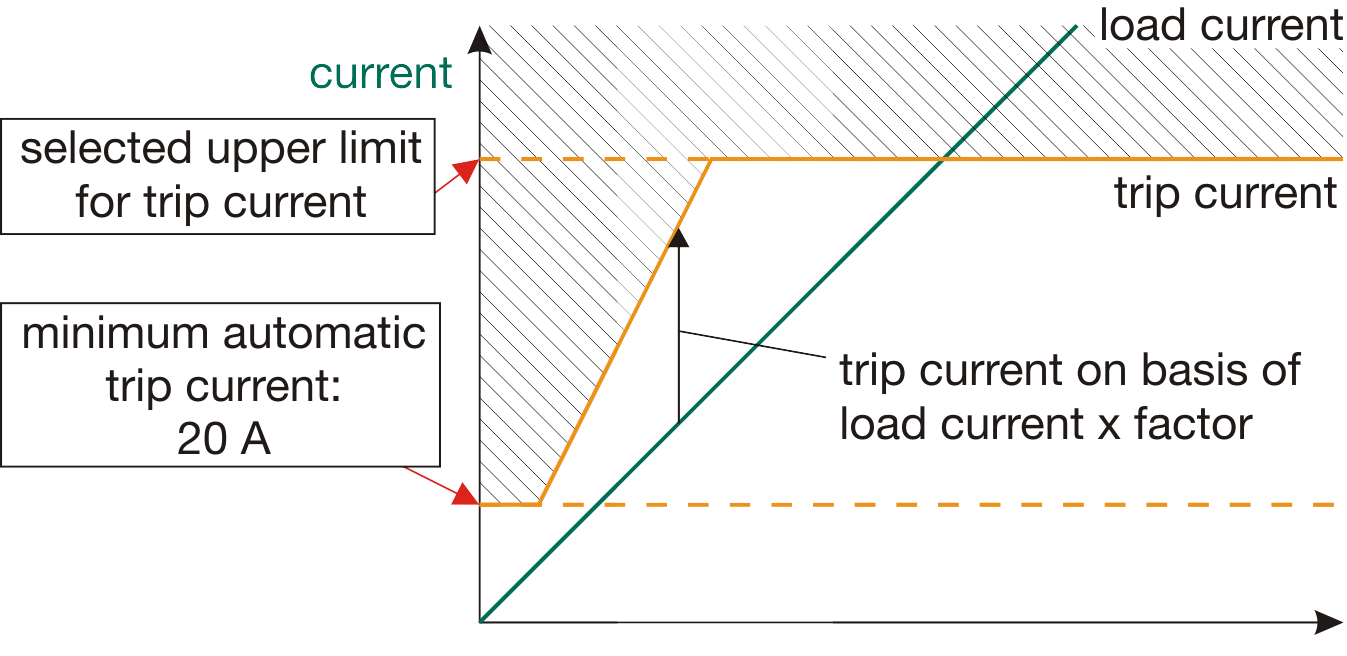Fault indicator
Type FLA4
The fault indicator type FLA4 is designed to be used on overhead lines of a medium voltage network. The type FLA4 can detect faults with two methods. The short-circuit detection method monitors the network current with a fixed threshold and a response delay filter. The fixed threshold can be manually adjusted or automatically calculated on basis of the current load and an adjustable factor.
The earth-fault detection method monitors the deviation of the current load within a certain amount of time with a di/dt algorithm. If the increase of the load current exceeds an adjustable current value, the voltage status of the network is monitored. In case of a voltage loss a fault is detected.
Configuration by remote control
All settings of the indicator can be adjusted very flexibly with the help of a remote control. In this way, the configuration of the device can be adjusted at any time without removing the indicator from the network.
The bidirectional short-range radio communication between indicator and remote control also allows to read out the configuration of the indicator, temperature values, the voltage status of the network and current measurements from the network.
Internal log and real-time clock
The fault indicator features an internal log with 100 entries. In this log the following events and configuration changes are stored.
- Detected faults including type of fault and fault current
- Reset of the indication including the trigger for the reset
- Remote indications (if activated)
- Network current drop and recovery / voltage drop and recovery (if activated)
- Configuration changes of the trip currents, the response delay time and the current-on-filter
A real-time clock provides date and time stamps for each log entry.
Enhanced automatic mode with upper limit
 The automatic mode of the type FLA4 continuously calculates an absolute threshold on basis of the current load. It uses an adjustable factor between 1.5 and 5.0 to calculate the trip current. In this way, the absolute threshold adapts automatically to the network conditions which can be useful in networks with strong fluctuations of the load current.
The automatic mode of the type FLA4 continuously calculates an absolute threshold on basis of the current load. It uses an adjustable factor between 1.5 and 5.0 to calculate the trip current. In this way, the absolute threshold adapts automatically to the network conditions which can be useful in networks with strong fluctuations of the load current.
But this could result in very high trip currents on higher current loads which may not be suitable. Therefore an upper limit for the calculation of the trip current can be adjusted as shown in the picture.
Installation and indication
The indicator can be mounted under live conditions with the help of an adapter and a hot stick. The mounting adapter is available with different joints, e.g. universal spline joint or bayonett joint.
The indication of faults if performed by an ultra bright flashing LED with focussing lens for optimized light distribution for enhanced visibility in the distance.
SCADA integration
The fault indicator type FLA4 can be connected to the remote indication interface type RIS. This allows an easy-to-install and retrofittable integration of the overhead line indicators into remote monitoring systems.
More information on the remote indication interface can be found on the pages of the two versions type RIS-FR and type RIS-FS.
Voltage detection with two thresholds
 The fault indicator features a voltage detection module with two thresholds. The voltage-off threshold is adjusted through a percentage value of the existing voltage level. The percentage value can be selected in a range from 20% to 90% of Un. This means that the voltage is considered to be off when the voltage drops below the selected level of Un.
The fault indicator features a voltage detection module with two thresholds. The voltage-off threshold is adjusted through a percentage value of the existing voltage level. The percentage value can be selected in a range from 20% to 90% of Un. This means that the voltage is considered to be off when the voltage drops below the selected level of Un.
In order to avoid detecting fluctuating voltage on and off states a voltage-on threshold can be selected. This second threshold determines when the voltage is to be considered as on. This should be selected on a higher percentage value of Un than the voltage-off threshold.
In this way, the fault indicator can detect clearly distinguished voltage states as shown in the picture.
| Order Data | ||
| Type FLA4 | 40.70.10 | |
| Remote Control Type HS | | for overhead line indicators | 40.34.10 |
| Mounting adapter | | bayonet type | 40.52.10 |
| Mounting adapter | | clamp type | 40.52.11 |
| Mounting adapter | | universal spline type | 40.52.12 |





